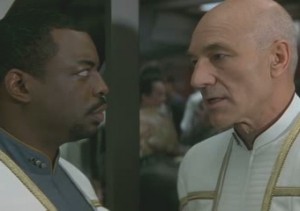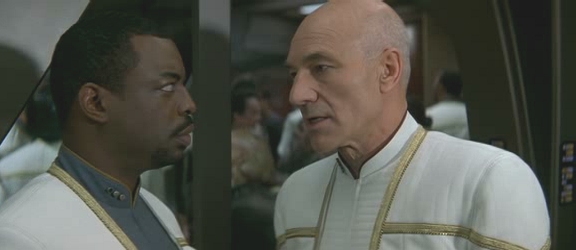Submitted by Jeffrey Scott, Desco AV

When people visit our showroom to look for a new television, the first question often asked is, “What size should I get?”. I like to answer that question with my own question, “What are you going to be watching and how far do you sit from the screen?” The reason for asking what you are watching has to do with the new shapes available now for home viewing.
A brief history of TV and Film shapes:
The original shape of silent films was a rectangle with an aspect ratio of 1.33:1. For every 3 units of height there were 4 units of width. From the 30’s to the 50’s there were some obscure films made at different shapes, but there was no standard for cinematography equipment or cinemas to show films at different shapes. Thus, when television was born it only made sense to match the shape of the cinema to the home. So, for 60 years our televisions have been 1.33:1. In the early 2000’s HDTV was born and widescreen came home. But alas, the shape was 1.78:1, a compromise between the film industry and the traditionalists.
Filmmakers are not ones to leave things alone. Starting with the film, “The Robe” in 1953, 20th Century Fox created a new format called CinemaScope. This process was a huge success and the widescreen phenomena was born. “The Robe” had an original aspect ratio of 2.66:1 and showed on huge screens that were 86% larger that standard cinema at the time. Hollywood has seen many different versions of cinemascope and today most widescreen films made for the theater are produced at the 2.39:1 aspect ratio.
How did we get HDTV’s that are 1.78:1? When HDTV was created there was a large fight to be the patent holder for the format. The FCC got involved and created a grand alliance that required all the manufacturers and scholarly institutions to work together to create a format that would satisfy everyone’s needs. Dr. Kerns H. Powers (Princeton), member of the SMPTE (Society of Motion Picture Technical Engineers) is credited with creating an aspect ratio that most easily adapts to all the competing shapes within its width and height limits.
With the invention of HDTV and the DVD player, Hollywood decided that the picture resolution was high enough that they could rent or sell you the film in its original aspect ratio. So, if you are watching a lot of films on your HDTV you will notice black bars on the top and bottom. If you are watching older television shows you will have bars on the side of your image and new or live TV should fill the entire screen.
How Image Shape Relates to Picture Size:

So, when we talk about how big a TV should be, what we are really talking about is field-of-view and image resolution. The ideal of film and television is to uphold the suspension of disbelief. We, as humans, want to be entertained and lose ourselves in the art of film or the excitement of the game. It would do us a disservice to interrupt that experience with technical distractions.
HDTV broadcast at 1080 lines of resolution and the old TV system (NTSC) broadcasted at 330 lines of resolution. The old resolution was so low that you had to sit about 5 to 6 times the width away from the image so that the scanning lines appeared smooth. If you sat closer, you could see the individual lines of image and it became distracting. With the advent of HDTV and Bluray, resolution is so high that this closeness does not become a resolution issue, but field-of-view does.
For HDTV live television, we find that most people prefer to sit 3 times the image width back. According to the SMPTE, the optimum viewing distance is 1.7 times the width of the image and THX labs recommend 1.3 times width. At 1.7 times the width the image is taking up 30 degrees of your field of view. So when you are watching sports or live TV, you will not have to move your head from side to side. You can sit comfortably and watch the image without eye or neck fatigue. It is recommended that you not get closer than 1.2 times the width of the image. So, if you have a 60-inch diagonal television (which has an image width of 54″), the popular distance with customers is to sit 13 to 14 feet away. The SMPTE recommends sitting optimally at 7 feet away and you would not want to be any closer than five and a half feet to the screen (THX).
In order to have an enjoyable film experience, one wants the image to take up enough of your field-of-view to lose yourself in the experience, but not so large to create motion sickness, eye fatigue or tennis-neck. Most of the work in this area has been done by the film industry. If you mostly want to watch Cinemascope widescreen movies, you are going to go much larger. This usually means going from a large flat panel TV to a projector and screen combo. If your seating is 15-feet from the screen your ideal screen size would be 5-feet high and 12-feet wide! Filmmakers using this format are using the edges of the images to complete the feeling of the visual topic. They are not trying to give you the ping-pong effect of sports on too large of an image. It is an effort to immerse you visually and suspend you in the experience.
If you have the time, stop by our showroom on Harrison Ave. in Olympia. We would love to show you home cinema at 2.39:1 or the latest in flat panel technology.
Desco AV
2306 Harrison Ae NW
Olympia, WA 98502
360.943.1393





















































